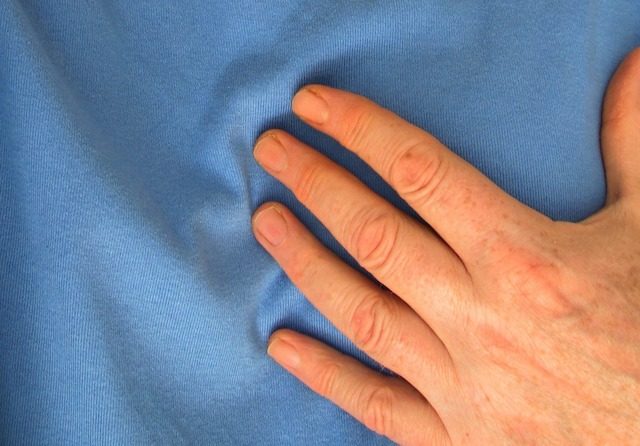The internet is a great resource, but one thing it lacks is guidance on what information to trust and what not to. The internet, especially since Covid-19, is full of medical misinformation, and it has spread widely through social media. Unfortunately, some of these medical misconceptions can be dangerous, and it’s best to clear them up for everyone’s safety.
10. The higher the percentage of medical alcohol, the better the disinfectant ability.

When the pandemic hit, stores quickly ran out of cleaning products and disinfectants of all kinds. Rubbing alcohol also became extremely difficult to find, as many people wanted it to disinfect surfaces from COVID-19. While it’s good that people are taking antiviral precautions, some observers noted that when there was anything left, it was usually a decent supply of 70% rubbing alcohol, with higher percentages generally unavailable. You might think this makes sense, since it sounds like higher percentages of alcohol kill more viruses, but that’s a common misconception.
The truth is that to disinfect common surfaces, you’ll need 70% alcohol, not 90% or higher. That’s because the alcohol still needs some water to spread across the surface, and it needs some time to kill germs before it completely evaporates. However, that doesn’t mean that higher percentages don’t still have their uses. They’re often recommended for electronics, where you’d rather sacrifice cleaning power to use as little moisture as possible.
9. Once you receive an organ transplant, your problems will mostly be solved.

In movies, TV, and every other form of media on the planet, a common plotline is that of someone in need of a vital organ transplant. They may be the last on the list, or they may have some other issue that is holding them back. The drama of the story usually revolves around how they got the organ, and then we are led to believe that they now live happily ever after. Unfortunately, while it would be great if that were true (and maybe someday it will be), it is not currently the case.
Unfortunately, the reality is that no matter how close the match, the transplanted organ will require you to take medications that suppress your immune system for the rest of your life. This is because your body will try to attack the new organ, thinking it is an invader. The “match” allows the drugs to keep this at bay, but it does not eliminate the need for them. You may also develop a type of diabetes called diabetes mellitus because of the medications you have to take.
8. You can get the flu from the flu shot.

In fact, far fewer people get the flu shot each year than people who get regular shots and other vaccines. Some people say it's mostly for older adults, young children, or people with weakened immune systems. They'll say they'll get over a case of the flu just fine, and that it might even make them a little sick, if that. They don't want to take that risk, so they avoid it. Some even say the shot is largely ineffective and usually doesn't work.
But most people's excuses are complete nonsense. First, you can't get the flu, even a mild case, from the flu vaccine. The flu parts in the shot are dead and can't suddenly come back to life. You may actually get mild symptoms, often associated with the flu, that can last for hours or days, which is why people are so confused.
As for the rest of the misconceptions, we'll take them one at a time. Everyone six months and older should get a flu shot; the loss of productivity from the flu is far worse than some vaccine side effects; and while it may not work, each year's vaccine targets the flu strain that's expected to be the biggest problem that season.
7. You can suck the poison out of a wound

A popular trope in fiction is that of an old poisonous wound from which someone tries to suck the poison out to save the sick person. This goes back, for example, to the Sherlock Holmes stories, where it is used for the plot of the mistaken vampire. It also probably goes back much further. It is an incredibly common trope, that's what we're saying.
It has become so common in popular culture that many people find it gross and scary, but it is real and very necessary. There are even devices to extract poison from a wound, and many would be surprised to find such devices being sold when they don't actually work.
The truth is, however, that most animal venoms don’t work as fast as the movies would have you believe, and surprisingly few people die from venomous animals each year. What you really want to do is get victims to a hospital as quickly as possible and give them antivenom. Sucking the venom out of a wound won’t get it out faster than the body can pump it through the bloodstream, and you can get poisoned if you have a cut in your mouth. As for extractor pumps, scientific studies have shown that they are ineffective.
6. Getting adrenaline into someone's heart is great for an opioid overdose.

"Pulp Fiction" is a classic film, and anyone who has seen it well will remember the scene where John Travolta races to his drug dealer with an overdosed Uma Thurman, then dramatically stabs her in the heart with an adrenaline-laced needle. Not only does he stab her in the heart, he also doesn't have to push the plunger, presumably because pushing it through the heart makes everything happen much faster.
Unfortunately, while the scene is funny, almost everything about it is wrong. While an injection into the heart, known as an intracardiac injection, is sometimes necessary, there is no reason to believe that it would be necessary in this case. It is also given slowly and carefully through the chest by a trained medical professional. If you were using an epinephrine needle, you would typically use the thigh. However, in this case, you would not want to use epinephrine at all, since Uma's character has overdosed on opioids. You would want to use Narcan, which today often comes as a nasal spray, making it much easier to deliver. If you want to speed things up, you should follow up with CPR.
5. Glasses - Magic glasses that solve all eye problems

Vision problems are common throughout the world, and almost everyone either wears glasses or knows someone who does. For the most part, people understand what they can and cannot do with glasses; however, this does not necessarily mean that everyone understands vision problems. Some people are confused when they meet someone who is not completely blind but does not wear glasses to improve their vision. There is a common misconception that glasses can solve all (or most) vision problems except blindness, as well as a general misunderstanding of what it means to be “legally” blind.
The unfortunate truth is that many people with extremely poor vision have problems that glasses simply can’t help, and for the most part, science can do little to alleviate these problems. These include things like age-related macular degeneration, diabetic retinopathy, sun damage, any nerve damage, and more. Scientists are trying to find ways to help these people, but much of it is very experimental.
As for legal blindness, the easiest way to compare it is to a normal sighted person. Someone with normal vision can see an object 200 feet away, well… 200 feet away. Seems pretty obvious, right? Well, to see that same object, a blind person would have to be 20 feet away.
4. Feed the cold, starve the fever

This is an old saying, dating back to John Wheatalls' dictionary of 1574. Like many folk sayings, it has become part of the culture in some regions, passed down from parents to children. Some people still take the saying seriously, and most, even if they don't understand medical science, assume that there must be some reason behind it. After all, a cold is a mild bacterial infection, and the flu is a virus, so it makes sense that they would be treated differently, right?
Well, maybe in some ways, but not in this particular case. The truth is that there is absolutely no scientific justification for starving someone who has a fever or any kind of virus. Whether it’s a cold, a fever, a broken leg, or any kind of medical issue, it’s vital that the person is well-fed, rested, and hydrated. So, if you’re trying to remember how that phrase should sound, it’s “Feed the cold, feed the fever.”
3. If you get to the hospital by ambulance, you will be admitted faster.

Some people, hoping to get to the hospital faster, call an ambulance when they have other ways to get there. While this may seem selfish, most people are not thinking clearly when they are in crisis and worried about their lives or the lives of their loved ones. They are simply trying to get medical help in a bad situation. However, this does not mean that it does not cause problems or does not cause great irritation to the medical staff.
The thing is, this popular idea is completely wrong and a complete misconception about how the medical system works. The purpose of an ambulance is to bring someone who has no other way to get there or who needs some kind of help to keep them alive on the way to the hospital. No matter how you get there, you will be treated as needed. This is called triage. It can also cause problems for others because it can tie up important resources that others may need. The point is that if you can get to the hospital safely by another means and you know you can get there in time, you won’t need an ambulance.
2. Defibrillators are magic electrodes for restarting the heart

Medical dramas probably use this image more than any other in their book. We all know the scene so well that we can recite it from memory. A man fails and there’s only one thing left to do: pull out the paddles of a defibrillator. Someone yells, “Okay,” we hear the sound of rushing electricity, and the paddles are pressed against the man’s chest. This is repeated until they wake up. The doctor might throw in a few lines like, “Oh my god, you’re not dying on me!” for added dramatic effect.
While these scenes make for great dramatic television, they’re not entirely grounded in reality. A 2014 study of dozens of resuscitation scenes from movies and TV found a host of problems across the board. Overall, they found that the whole thing represented a missed opportunity to educate the public. For this reason, defibrillator paddles are often misunderstood, but they’re not magic paddles for restarting a heart. If someone’s heart rhythm is abnormal, they can get it back to normal, but they won’t restart a heart that’s actually stopped.
1. You need to put something in the mouth of the person grabbing you so that he doesn’t bite off his tongue.

Seizures are also a fairly common medical condition, and also create a lot of drama on your favorite doctor shows. Look at you, ambulance And Hausa. Sometimes people will even try to force something between the teeth of the person they are grabbing, without biting off their fingers, to save the victim from potentially having their tongue bitten off. This is a common misconception, and it is important to know not to do this if you ever find yourself in a grabbing situation.
If someone is having a seizure, one of the most important things is to keep their airway clear. This means you should avoid doing anything that might interfere with their breathing, such as putting anything in their mouth. You also shouldn't bite off their tongue, although it can be painful to bite and cause a nasty sore, which is what makes people so confused. In fact Your focus, in addition to clearing their airway, should be making sure they don't have anything they could injure themselves on, timing the attack, and calling for medical help if needed.













Оставить Комментарий